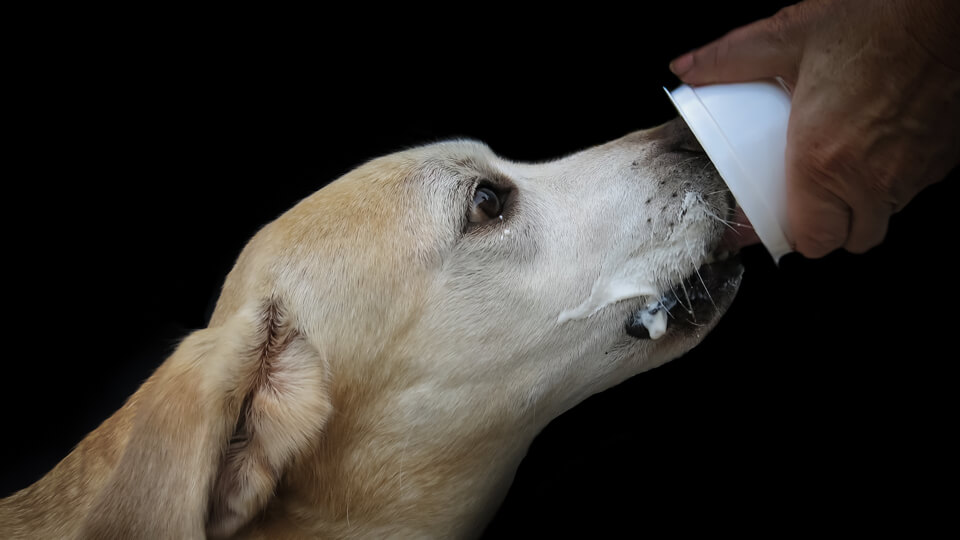
How popular are probiotics for pets among consumers? And how has demand evolved over the past few years?
With the increased focus on health in general, consumers are also paying more attention to the digestive health of their pets. This article examines the importance of the pet probiotics category and looks more closely at the growth prospects.
What the Google search data shows
Data from Google shows that while demand for probiotics for humans has stabilized over the last 5 years, dog and cat probiotics are gathering steam. In 2021, search volume had more than doubled for cat and dog probiotics compared to 5 years ago.
Dogs have traditionally consumed the most supplements in the pet industry, and probiotics are no exception. More than 3 times as many searches are performed for dog probiotics compared to cat probiotics.
Consumers from the US search for pet probiotics the most, followed by Canada. The UK, Australia and Singapore are also interested in pet probiotics, conducting roughly half the number of searches compared to the US.

How about Amazon?
On Amazon, there is a similar pattern. The Amazon search data accessed by GlobalPETS indicates that the number of searches for dog probiotics has tripled in the last 3 years, while search volume for cat probiotics is estimated to have doubled in the same period.
The data also indicates that consumers look for dog probiotics 5 times more often than cat probiotics, which confirms that dog probiotics are more popular than cat probiotics.
Most popular formats
Looking at the products carried by the major pet supplies retailers (including Amazon) in this category, the best-selling type of probiotic supplements is (soft) chews, especially in the US. For example, 6 out of the top 10 probiotic supplements on Amazon US are chews. This compares with 4 out of 10 on Amazon UK, and 3 out of 10 in Canada. Powders that can serve as a meal topper are the second most popular format for dog probiotics.
What about food products?
While there are many pet food products that contain probiotics, they are rarely the main factor mentioned on the packaging or in the marketing materials. Instead, the promotion of pet food products tends to focus much more on digestive health and sensitive stomachs. Therefore, there could be an opportunity to capture the attention of consumers who are actively looking for pet food products containing probiotics by clearly communicating their presence on your packaging.
Size of the pet probiotic supplements market
While the Amazon data does not paint a full picture of the total market size, the estimated sales data from the e-commerce giant’s platform does shed some light on the popularity of probiotic products.
The top 3 probiotic supplements for dogs are each selling between $1.5 million (€1.3M) and $4.5 million (€4M) worth of product per month in the US alone. In the UK, the most popular dog probiotic supplements are selling at a rate of around £0.5 million ($0.7M / €0.6M) per month. In contrast, the top-selling probiotic supplements for cats are each estimated to generate closer to around $0.5 million (€0.4M) per month in the US and much less in other markets.
M&A activity
Investors are also keenly interested in getting a slice of the action, both in the probiotics space and in pet supplements generally. Zesty Paws, a pet supplement brand with more than $100 million (€88M) in revenue and one of the best-selling dog probiotics on Amazon.
was sold for $610 million (€537M) to H&H Group in September 2021. Meanwhile, Vestar Capital acquired a majority stake in PetHonesty for an undisclosed amount in July 2021, FoodScience added Pet Naturals to its portfolio through an acquisition in 2021, and Swedencare acquired NaturVet for $447.5 million (€394M) in February 2022.
Dog yogurt
Yogurt is one popular human food product that contains lots of probiotics. In view of the humanization trend, perhaps it should come as no surprise that multiple ‘dog yogurt’ products are available on the market. Irrespective of whether yogurt is actually effective as a probiotic supplement for dogs, let’s focus on what the consumer data tells us. Are dog yogurts a step too far or are they catching on?

Over the past 5 years, consumers have searched increasingly often for dog yogurt (apart from a dip in recent months). On average, there has been a 37.5% rise in interest, so there is clearly a place for these products in the market. Having said that, this is a nascent niche and the search volumes are currently still much lower than for ‘probiotics for dogs’.
The latest articles

How pet parents will shop for their pets this Christmas
A new survey takes the pulse on holiday shopping trends in the UK, including popular categories and average spending.

General Mills’ pet portfolio posts negative performance
Both revenue and net sales dropped by 4% in the last quarter amid less demand.

Negotiations of new EU rules on sustainable packaging to kick off in 2024
The Council and the Parliament will start the legislative process to design regulations regarding the packaging and packaging waste proposal put forward by the European Commission last year.
Weekly newsletter to stay up-to-date
Discover what’s happening in the pet industry. Get the must-read stories and insights in your inbox.